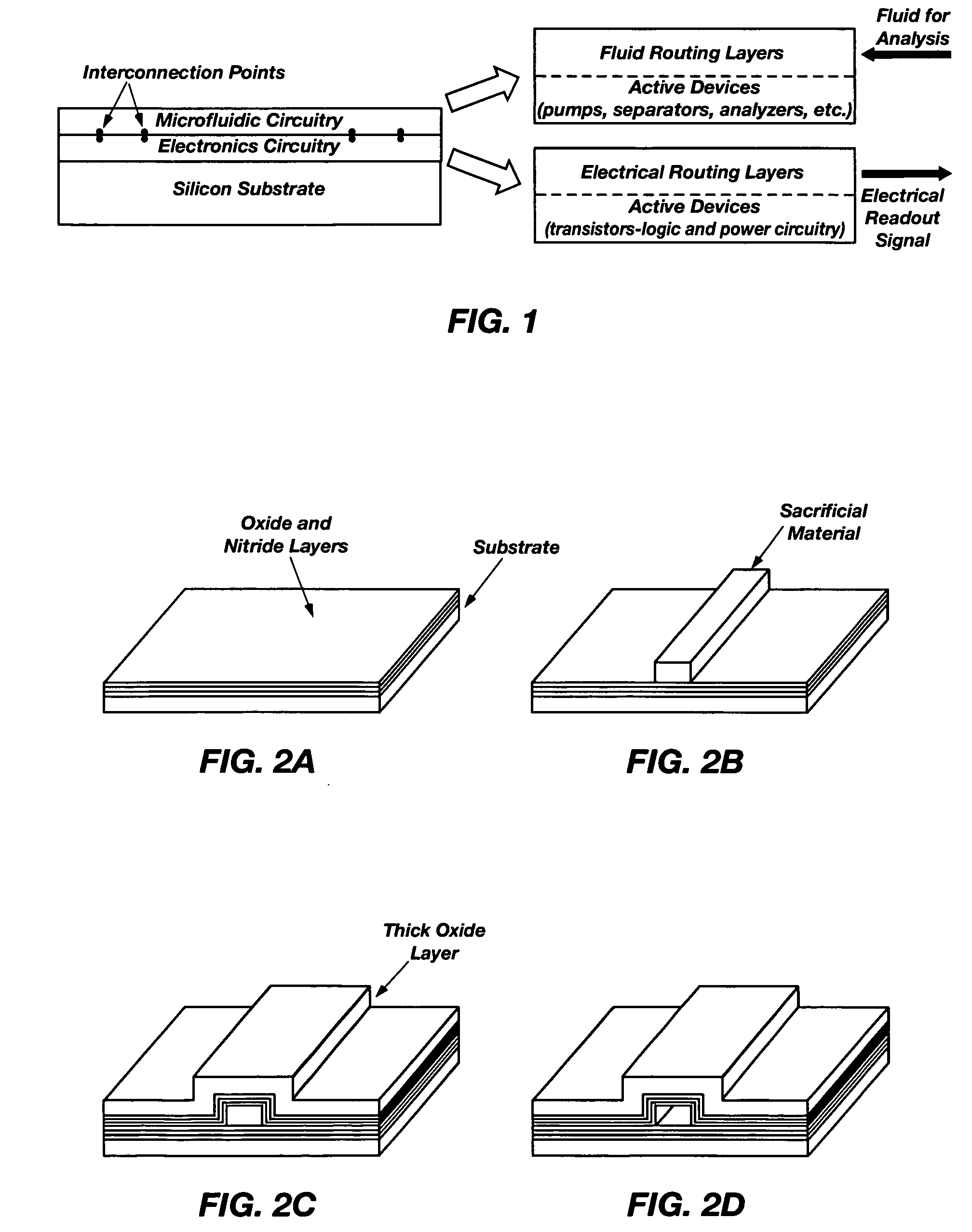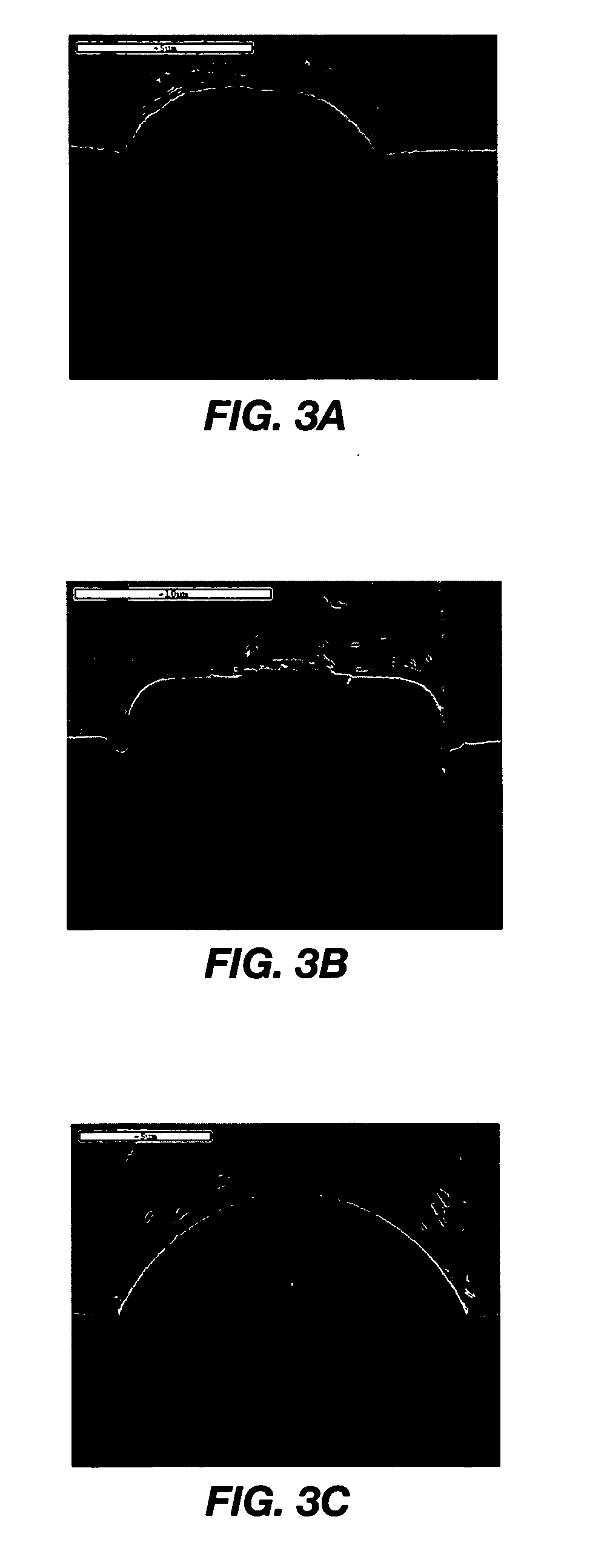Integrated planar microfluidic bioanalytical systems
a microfluidic and bioanalytical technology, applied in the direction of instruments, optical elements, optical waveguide light guides, etc., can solve the problems of serious limitations, the enormity of the analytical problem is clearly evident, and the protein analysis is an extremely difficult task, and achieve rapid, automated and high peak capacity separation
- Summary
- Abstract
- Description
- Claims
- Application Information
AI Technical Summary
Benefits of technology
Problems solved by technology
Method used
Image
Examples
Embodiment Construction
[0056] Reference will now be made to the drawings in which the various elements of the present invention will be given numerical designations and in which the invention will be discussed so as to enable one skilled in the art to make and use the invention. It is to be understood that the following description is only exemplary of the principles of the present invention, and should not be viewed as narrowing the claims which follow.
[0057] The present invention is a system and method for integrating microfluidics directly onto electronic systems, thereby making it possible that logic and electric power elements can be built into a microfluidic analysis system. FIG. 1 illustrates the fundamental design concepts of the present invention.
[0058]FIG. 1 is provided as an illustration of a cross section of a substrate showing how microfluidics are combined on the same substrate with microelectronics using thin-film microfabrication techniques. Using flat silicon substrates 10, electronic c...
PUM
 Login to View More
Login to View More Abstract
Description
Claims
Application Information
 Login to View More
Login to View More - R&D
- Intellectual Property
- Life Sciences
- Materials
- Tech Scout
- Unparalleled Data Quality
- Higher Quality Content
- 60% Fewer Hallucinations
Browse by: Latest US Patents, China's latest patents, Technical Efficacy Thesaurus, Application Domain, Technology Topic, Popular Technical Reports.
© 2025 PatSnap. All rights reserved.Legal|Privacy policy|Modern Slavery Act Transparency Statement|Sitemap|About US| Contact US: help@patsnap.com



